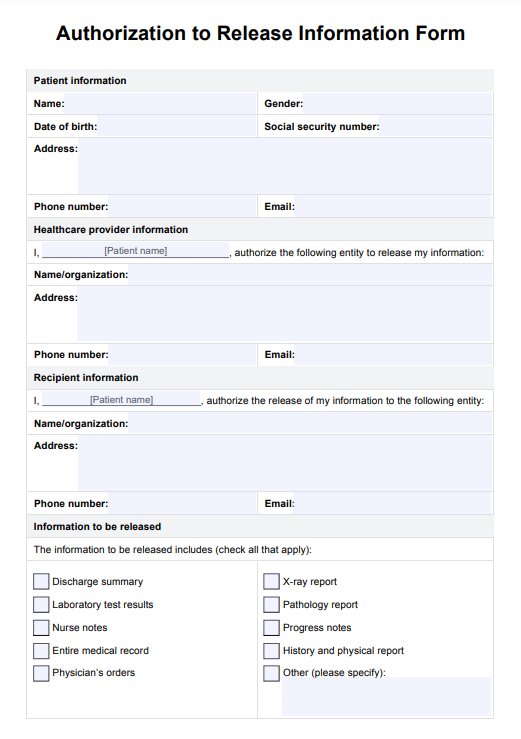An authorization to release information form is a document that allows a healthcare provider to share a patient's protected health information (PHI) with a designated third party, such as another medical provider, a personal representative, or a family member. This form specifies what information can be shared, the purpose of the disclosure, and the time period the authorization is valid.

Blank Authorization To Release Information Form
Learn how a Blank Authorization To Release Information Form helps protect patient privacy. Download a PDF template and example today!
Blank Authorization To Release Information Form Template
Commonly asked questions
No, a HIPAA release form does not need to be notarized. HIPAA does not require notarizing these request documents, though some healthcare organizations may choose to have them notarized as an additional security measure.
A valid authorization form to release medical records must include the patient's signature, the specific sensitive information to be disclosed, the person/entity authorized to make the disclosure, the person/entity authorized to receive the information, the purpose of the disclosure, an expiration date or event, and a statement that the patient has the right to revoke the authorization. The form must be written in plain language that the patient can understand.
EHR and practice management software
Get started for free
*No credit card required
Free
$0/usd
Unlimited clients
Telehealth
1GB of storage
Client portal text
Automated billing and online payments











